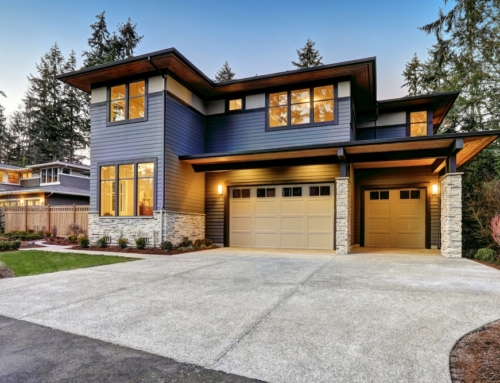Does your home suddenly seem too small? Do you find yourself staring wistfully at every large home you pass by, wishing you had all that room to spread out in?
You may have trade-up fever, a serious (though not fatal) condition that usually strikes those whose families have recently grown or whose finances have taken a turn for the better.
Before you pull out your checkbook, you have to ask yourself if you’ll really be better off if you trade up to a bigger home. The answer may surprise you: Trading up is actually more expensive than many folks imagine.
Everything costs more with a larger home, including mortgage and insurance payments, real estate taxes, maintenance and upkeep. But the actual process of selling your home and buying another will take the first significant bite out of your wallet.
Let’s start with selling. Today, approximately 80 percent of all sellers hire a broker to list their property for sale. That means most sellers will pay a sales commission, which at 5 to 7 percent of the sales price, is traditionally the largest cost of sale. The commission amounts to $5,000 to $7,000 for every $100,000 of sales price. So if your home sells for $250,000, you’ll probably pay between $12,500 and $17,500 in broker’s commission.
While that’s the single largest cost of sale, it is by no means the only one. Sellers often pay approximately 15 to 20 other closing costs and fees which can push the total cost of sale to more than 10 percent of the sales price.
Some of these items (with their approximate dollar cost) include: Cost of survey ($150-$300); title insurance ($150-$500 plus); recorded release of mortgage ($20-$45); local city, town, or village property transfer tax, state transfer tax, state capital gains tax (nothing to $10 per $1,000 of sales price); credit to the buyer for unpaid real estate taxes for the prior or current year; attorney’s fee or escrow agent’s fee ($250 to several thousand dollars); FHA fees and costs; condo/co-op move-out fee (nothing to more than $400); paid utility bills ($10-$25 each); certificate of compliance with building codes ($10 or more per violation plus the cost to fix the problem); seller’s home, pest, radon and other inspections ($25 to $250 each); association reserves (based on the seller’s percentage of ownership in the association).
On the buying side, your purchase could cost you anywhere from 2 to 7 percent of the sales price, though some of this can be deducted from your federal income taxes in the year of purchase. Still, that’s $2,000 to $7,000 for every $100,000 of sales price.
Some of these include: Lender’s points, loan origination, loan service, or loan discount fees (zero to 3 percent of the loan, or more); loan application fee (zero to $350); lender’s credit report ($40-$60); lender’s processing fee ($75 to $125); lender’s document preparation fee ($50 to $200); lender’s appraisal fee ($225 to $275); prepaid interest on the loan (paid per day until the end of the month in which the closing occurs); lender’s insurance escrow (15 to 20 percent of the cost of the home owner’s insurance policy for one year to start the escrow); lender’s tax escrow (33 to 50 percent of annual property taxes to start the escrow); title insurance cost for the lender’s policy ($170 to $300); special endorsements to the title ($15 to $50 each); house inspection fees ($225 to $275); title company or escrow company closing fee ($150 to $400); recording fees of deed or mortgage ($50 to $75); local city, town, or village transfer tax, county transfer tax, and state transfer tax (zero to $10 per $1,000 of sales price); attorney’s fee ($250 and up); condo/co-op move-in fees (zero to $400, or more).
So how much does this really cost? Let’s say you decide to sell your home for $175,000 and trade up to a home that costs $230,000. Depending on how much commission you pay, your costs could range from $12,250 to $17,500 on the sell side and from $4,600 to $16,100 on the buy side. Together, your costs of sale and purchase could range from $16,850 to $33,600.
And that doesn’t include any repairs you’ll have to make to your old home before you sell it or repairs you’d like to make to the new property. And, it doesn’t include the costs of moving and decorating.
While the total seems outrageously high, you can deduct some of these costs in the year of purchase, like prepaid interest. Most of the rest can be applied toward your home’s cost basis, which will help lower the amount of capital gains tax you’ll pay down the line.
Published: Jun 17, 1996






Leave A Comment